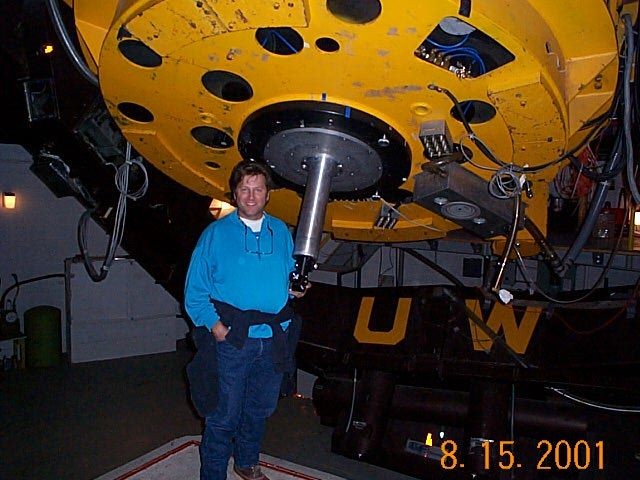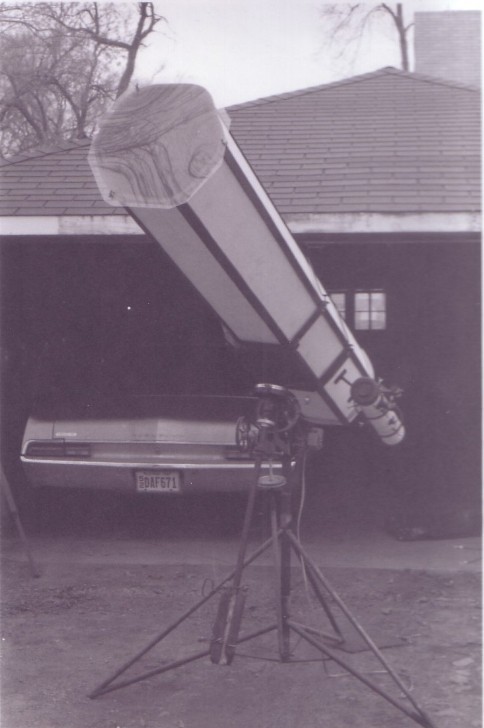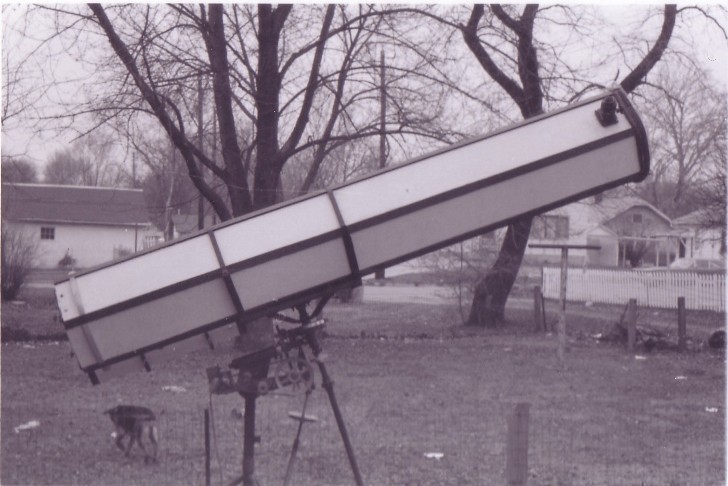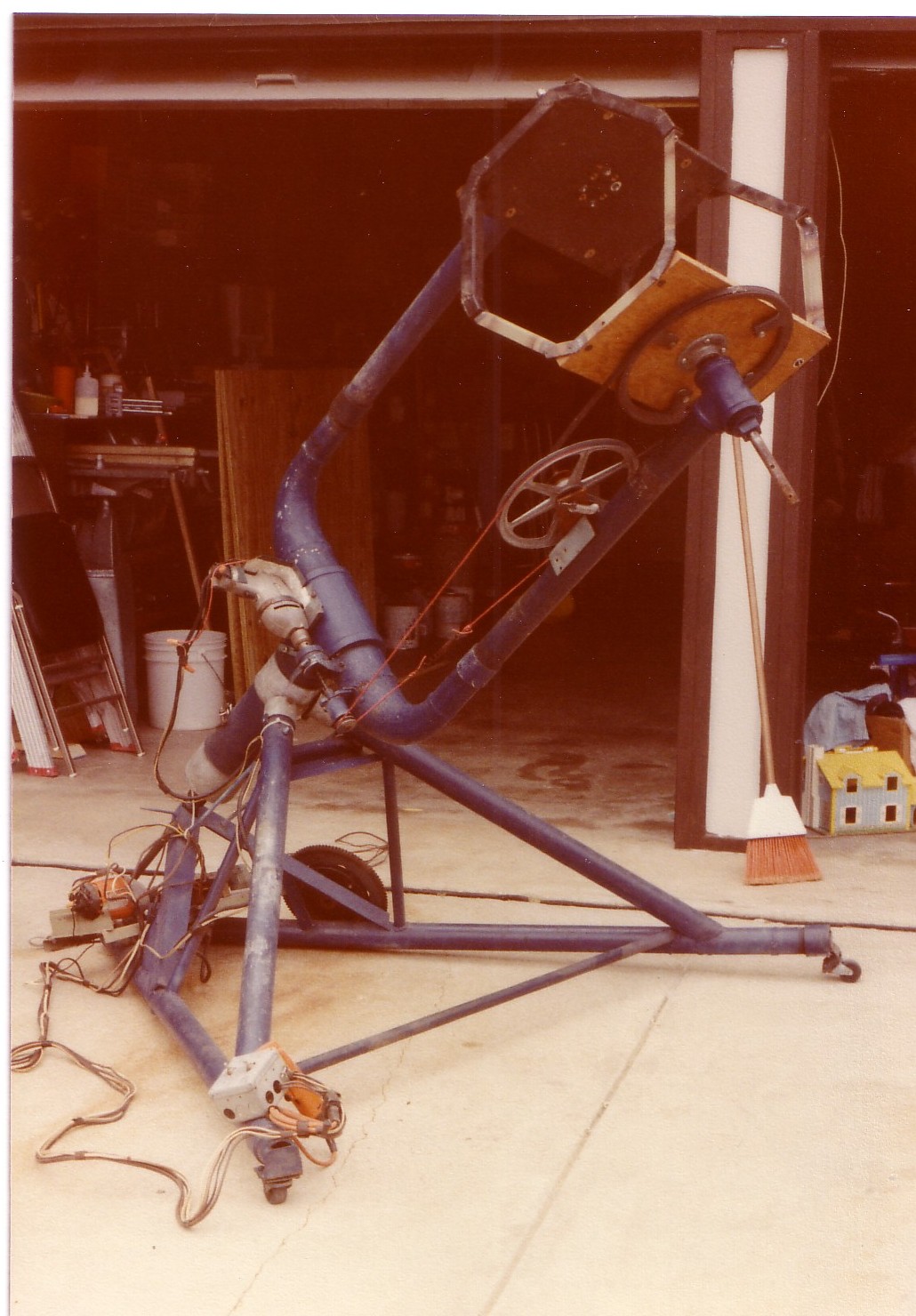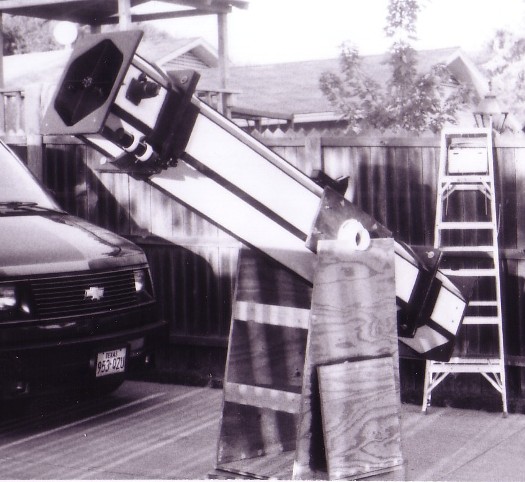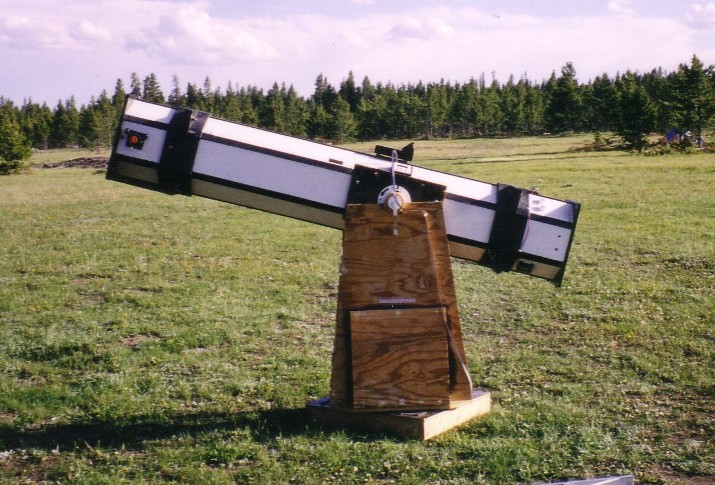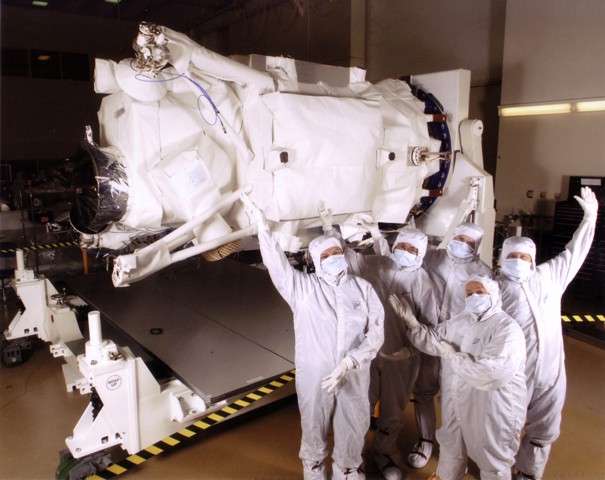It all started when I was 10
For Christmas 1964 I received a small, Tasco refractor. It was a cold winter in Iowa that year, so the first time I used it, my dad opened the upstairs bathroom window, we pointed the scope towards the North and I saw Polaris. I didn't know at the time it was a double star, but my first object was stellar.
Soon afterwards, the planets were on my list of objects. In the local newspaper, the Iowa City Press-Citizen, they had listed the planets for each evening. I cannot remember exactly the order I first viewed the planets, but might guess Venus, Jupiter and Saturn were most often seen.
I remember, sometime in 1965, seeing the great sungrazing Comet West. It was one of the most spectacular comets I have ever seen.
For Christmas, 1968...
I remember wanting an astronomical toy called a Star Finder. It was a set of axilury circles, that could be used to find any star in the sky. The local toy stores in my area didn't have it, so my folks and the family drove to Chicago to do some Christmas shopping. I should have known something was up, for my dad had found a place that still had some and Santa brought me what I had wanted.
I still have this toy which brings back many memories in trying to find the brighter stars. It was my first attempt to find objects in the sky in a more scientific approach.
See the Star Finder Manual that came with this toy.
Boy Scouts and First Magnitude Stars
I started Boy Scouts when I was 11. Soon, my advancement meant that I would start working on merit badges. In March, 1969, I received my First Class Award. Shortly after this I started working on merit badges. The first merit badge I received was the Astronomy Merit Badge. Shortly after this badge, I received the Space Exploration Merit Badge. By April, 1970, I received my Star Award and was half way to the Life Award when scouting ended for me, in the spring of 1971.
The one of the things that I remember from my scouting experience was the names of all the 1st magnitude stars in the sky and how to navigate by looking at the night sky.
Onto Star Trails and Constellation Pictures
My second telescope was a 3 inch newtonian reflector, which was mounted on a weird alt-asimuth mount. I changed this over to an equatorial mount with a clock drive. This proved to be a good choice, for I used the scope some, but the mount more.
I removed the telescope and mounted a Pentex SLR camera on the equatorial mount and clock drive. I purchased an inverter, so I could make AC power from the car battery. I then proceeded to take constellation pictures galore.
I would drive east of Iowa City and setup on an access road to a corn field. Then open the shutter for minutes at a time. Once I even caught a lightning bug flashing across the picture. I would process this 400 ASA Tri-X black and white pictures in a darkroom I made in the basement. I even bought an enlarger to print the pictures. I was into astrophotography.
When I took the general astronomy class at the University of Iowa, in the fall of 1972, Dr. James Van Allen was teaching the class. He offered us an extra credit project of 50 points. You could do most anything astronomical and receive credit.
When I was in high school, I was part of the audio-visual department. Being part of this department, I learned how to mount pictures to cardboard. So, combining my constellation pictures with my mounting techniques, I made a poser sized display of 10 constellations of winter that I had in my archive. I added a clear plastic overlay on each constellation, with "lines" on this overlay that corresponded with the star patterns underneath, thus illustrating the constellation to the viewer.
A week after handing in this project, Dr. Van Allen asked that "I would like to see Mike Hotka after class today". I wondered what he wanted. When I approached him after class, he introduced himself to me and said my project was the most original project he had ever seen in all his years of teaching. I was just blown away. Dr. Van Allen also offered that if I ever needed anything, don't hesitate to ask him.
After that class, I changed my major from Music to Astronomy and eventually Physics. I met Dr. Van Allen in the halls of the Physics Building often over the next 4 years and all my classmates were impressed how warmly Dr. Van Allen always greeted me. Made me feel important in those years of learning.
Did I mention that I also delivered Dr. Van Allen's newspaper when I was a paperboy in Iowa City?
My first Real telescope
In June of 1973, my 12.5 inch f/8 primary and secondary mirror set was shipped from the Coulter Optical Company. By the summer of 1974, I had some of the telescope that most of you see today. It was mounted on an German Equatorial mount. It used an icecube motor and a gear box to drive the RA axis at the rate the Earth spins.
When we moved to Texas, it became apparent that the telescope was too big for me to transport by itself. I was still hooked on an equatorial mount, for I wanted to image through my telescope. That is why I picked the size of the scope in the first place. All the pictures in Sky and Telescope of the time were from this style and size of scope.
The base was made from 2 and 4 inch gas pipe, welded together to make an A-Frame. My dad worked for the utility company and dumpster diving for scrap gas pipe was always fun. For Christmas in 1974, I got a 4 inch tee fitting. Pretty exciting, for this was the base of the fork mount. The resulting mount worked real nice but was very heavy.
So I decided to scrap the gas pipe base and build a dobsonian base. This conversion started in 1984. It is basically the scope I use today, with few modifications.
With the Mel Bartel's computerized telescope revolution, I am rapidly converting the current version of the scope to a surrier truss scope, with a Bartel's drive system. I am wanting the tracking function again and having motors on each axis will achieve this. I can also use the motion control of the motors to aid in my star-hopping from star to object.
In May, 2010, I decided to scrap the Mel Bartel's drive system in favor of a ServoCat Jr connected to a Sky Commander Digital Setting Circles. A friend of mine from Dallas, TX had tried the Mel Bartel's drive and was not satisfied with the results. He liked the ServoCat/Argo Navis Digital Setting Circles solution better.
On April 15, 2011, I completed the upgrade of my scope to a fully functional, motor driven, 12.5 inch f/8 telescope.

Trying to be a Professional
While at Iowa, I tried to become an observing assistent at the universites 24 inch telescope. I spent all summer at the observatory learning the ropes and just missed out on the opportunity to a friend, Dean Ketelsen, who was hired. Dean is now a large mirror maker at the Steward Mirror Lab at the Arizona State University and helped form the Grand Canyon Star Party.
I remember one night, I showed up late to be let into the normal door. The astronomers were upstairs and could not hear the door bell at the door. Through some wooden planks and sheer determination, I scaled the outside of the observatory and climbed into the dome through the open slit. Boy did I scare some people that night. They never left me at the door after that.
My first Astronomy Club
My first "official" astronomy club was the Texas Astronomical Society, of Dallas, TX. These are the folks that host, in part, the Texas Star Party. I was a member of this club from about 1983 to 1992, when we left the Dallas area to move to Colorado.
I helped develop their Atoka, OK observing site and even "owned" a pad at this site. It was about 90 minutes north of Dallas, just inside the Oklahoma border. It had dark skies and I did much observing from this location.
Moving to Colorado
I am a programmer by trade. I worked in the telecommunications industry for many years. As such, I always heard of this company called the Bell Labs. People from the Bell Labs, when they joined companies I worked for, were put on a pedestal and prayed to as if they were a telephony god. I was very amazed at this behavior.
Looking around, I noticed that there was a Bell Labs in the Denver, Colorado area. One of their entry requirements at the time was to have a Masters Degree. So I attended the University of Texas at Dallas for 4 years and in 1992, received a Masters Degree in Computer Science.
We left Texas in May of 1992 and arrived in the Denver area. I got a job at the Bell Labs in Westminster, CO and then looked around for an astronomy club to join. I found the Longmont Astronomical Society, an organization dedicated to observation astronomy.
Portability is my goal
I have spent many years since the first inception of my telescope in August, 1973 refining the basic design and making it more portable to darker sky locations. From the pictures on this page, you can see the main tube is bolted together in 2 places. The tube breaks down into 3 sections, with dust covers for each end that contains the mirrors.
The wooden dob base breaks down into 6 pieces and makes for easy stowing and transportation. The down-side to this is that it takes a few minutes to setup and it a lot tougher in the dark, trying to start the bolts and all.
Currently, I am trying to make an AstroSystems Telekit type of enclosure. My telescope is an f/8, so it is beyond what AstroSystems makes. So, I am attempting to make the rocker box and main mirror enclosure much smaller and lighter, thus making it more portable.
Star Hopping is my Passion
I love to star hop. I own a set of digital setting circles, but found myself questioning the accuracy of this device to find the correct galaxy in a galaxy rich area like Virgo or Leo. So I prefer to star hop to the object. Once arriving at the object, I"know" its the one I wish to observe.
I am about to Bartelize my 12.5 inch f/8 dobsonian but will not use the computer pointing part of the system. I wish to use the drive to track the object in the eyepiece and use the up-down, left-right buttons to aid me in my star hopping activities.
I have found that star hopping allows me to learn the constellations of the sky and continued star hopping reinforces my understanding of which area of the sky belongs to which constellation. It always amazes me the extent that some of these constllations "snake" in-between others.
Public Outreach
In September, 2000, I met a bunch of folks who volunteered at the Little Thompson Observatory, in Berthoud, CO.
Shortly after this, I was asked if I could write a monthly article for the Longmont Times-Call newspaper.
In 2001, I joined a part of NASA's public outreach program, called the Jet Propulsion Laboratorie's Solar System Ambassador program. As such, I have made and given many presentations about space craft exploration in our solar system. I really like talking about astronomy, and this program is just a natural extension for me.
I help Girl Scout troops with the astronomy merit badges, as well as take my telescope to public star parties sponsored by the Longmont Astronomical Society, of which I have been a member since 1995.
A Previous Job
Some people are fortunate enough to get a job in something they love. After 25 years of moving from Rockwell International in Cedar Rapids, IA, to Datapoint in San Antonio, TX, to Northern Telecom, Digital Switch and Rockwell International in Dallas, TX, to AT&T Bell Labs/Lucent/Avaya and SUN Microsystems in Denver, CO, I have found an opportunity at Ball Aerospace in Boulder, CO. I have been there almost 17 years now.
I am the one on the right.
Its like a dream for me to work here. Playing with spacecraft is a dream come true.
In 1977, I had an opportunity to work for Singer-Link, who was developing a simulator for the Space Shuttle. I would have lived and worked at the Johnson Space Center in Houston, TX. While on vacation, we toured the Johnson Space Center and I had an opportunity to see the system I would have been working on. It was HUGE!!! Very impressive. Testing your code would have been like playing.
I passed the Space Shuttle Simulator opportunity up and never again dreamed I would have a second opportunity to work in the space industry.
My Current Job
My last job before I retire is at Raytheon Technologies where I work on the ground segment to manage spacecraft in space.
This is my last bus to ride and my stop is coming in January 5, 2024, when I get off the work bus and retire.
Teaching Astronomy at Front Range Community College
In the spring of 2004, I was given the opportunity to finish the last 5 weeks of the Intro to Astronomy at the Longmont Campus of Front Range Community College (FRCC). I really enjoyed this experience and wanted to continue teaching Astronomy there.
I was told that I needed a Masters of Science degree in Astronomy or a related field in order to be eligible to teach Astronomy at FRCC. So in the summer of 2006, I entered a program at Webster University and received a Masters of Science degree in Mission Operations and Space Management. This degree qualified for a degree in a related field.
I was contacted by Dr. Lindsay Rocks from the Westminster campus of FRCC and offered the position to teach an entire semester of Intro to Astronomy class in the Fall, 2009 term. I accepted. I had a lot of fun teaching this class and found out I am not that bad of a teacher. I learned alot about how to handle the students and teach this material and will apply it to the next time I teach this class.
